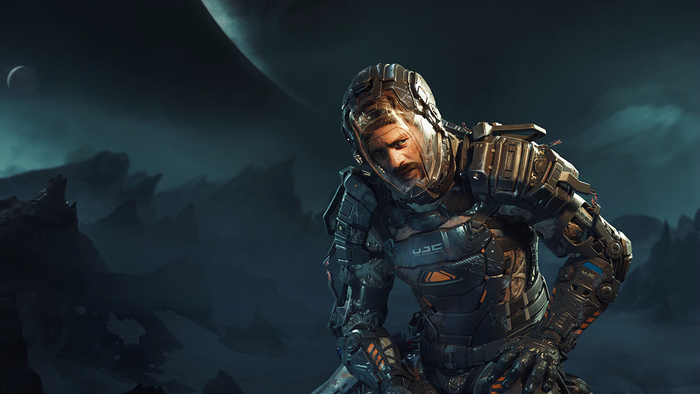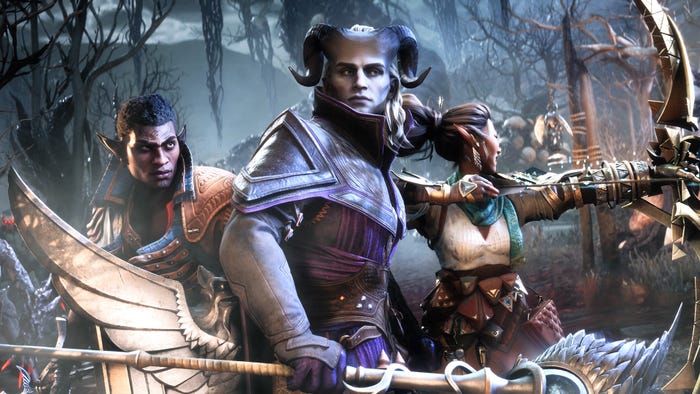How Ubisoft taught a strategy game studio to be a AAA shooter studio
How does Ubisoft develop a game across as many as 10 different studios? Gamasutra speaks to David Polfeldt, managing director of Massive, developers of The Division, to find out.

Ubisoft acquired Massive Entertainment from Vivendi in 2008; at the time, it was an acclaimed PC real-time strategy developer. The studio soon slipped under the radar. It turns out that prior to announcing its upcoming game, Tom Clancy's The Division, it contributed to the development of Assassin's Creed Revelations and Far Cry 3. Triple-A games require huge teams; Ubisoft's strategy has been to split development of its games -- in particular the Assassin's Creed series -- across studios. (Kotaku reports that 10 studios are working on Assassin's Creed Unity.) Gamasutra spoke to Massive's managing director, David Polfeldt, about taking on a lead studio role in development on The Division, and how game development works in the world's largest triple-A hit machine.
Going to school
Polfeldt tells Gamasutra that Ubisoft acquired Massive with an eye to turning it loose on the Clancy franchise. The problem, so to speak, was that it was a hardcore PC RTS studio; Massive had the design skill, but not the production style. The solution? School the studio in doing triple-A development the Ubisoft way by having it collaborate with Ubisoft Montreal. It played a smaller role in Assassin's Creed Revelations but for "Far Cry 3, we were involved in everything, really, but mostly on multiplayer and co-op," Polfeldt says. He describes it as an "intense collaboration."
Working on Assassin's Creed and Far Cry 3 "was really like a university for us."
"In a way, you could say, we're a result of that. ... It was really like a university for us," he says. "To me, it's clearly the best long-term strategy. Because you take some really good studios that happen to be in top form and you allow them to work with other studios and make them grow, share their technology, and then a couple of years down the line, the other studio is one of the top studios -- because they've learned the world of triple-A." "Now we can apply that experience to our own game and, hopefully, share that with others," he hopes. It also adds flexibility to production; there's a companion app for The Division that's being developed by Massive in-house, but the first prototype was developed with Ubisoft Quebec. Ubisoft studios Red Storm (based in North Carolina) and Reflections (in Newcastle, England) are also collaborating with Massive -- "They own a couple of parts of the game, and we want them to own them and really feel autonomous with those things," Polfeldt says. 
What does it mean to be a lead studio?
Massive is the lead studio on The Division. What does that mean? "You're expected to lead the other studios. But it's not outsourcing. It's very different," says Polfeldt. Polfeldt says that he began by asking the other studios "What are you really passionate about? And, be blunt, where do you think you're better than us? Because that's what we want you to do on this project. What would you like to own?" In the case of Red Storm, that was guns -- because of its Clancy expertise and its location, in North Carolina, which allows easier access to weapons unavailable to Sweden-based Massive. "So they build them, they do all of the audio with them. It's just an area where they feel super comfortable, and autonomous, and proud about what they do," says Polfeldt. There is "a kind of tension" between the lead and support studios, however, Polfeldt admits, though he describes it as "healthy." "Where I think it becomes more difficult is that there is, in every studio, there is an ambition to lead a project or own a project. ... We certainly had that with Montreal on Far Cry 3."
Massive's relationship with the other studios "does require a bit of attention so it doesn't spin out of control."
"It does require a bit of attention so it doesn't spin out of control," Polfeldt says. At the same time, the ambition to lead is what caused Massive to begin work on the Snowdrop engine -- which forms the core of The Division -- while it was working on Assassin's Creed and Far Cry 3. Ubisoft management encouraged this experimentation -- within boundaries. "We were so convinced we needed to make that engine," Polfeldt says. "At another company, they could have said, 'You know, you don't have to develop a game engine. That's just a waste of time and money.'" "Ubisoft, we come in and say, 'We really, really need to do this. Because we think we can excel on this generation of consoles.'" Management's response? "Okay. It seems important to you. You seem to have a very clear idea what to do. Okay, fine. Put a bit of time, put a bit of people on that, and let's see." Ubisoft didn't let Massive run wild -- there was a reckoning when some work had been done. "At some point you need to prove, 'Look at what we can do because you allowed us to experiment,'" Polfeldt says. "But the starting point is always met with a very positive approach. It seems to be live, or seems to have a fever, or something is going on there, there's good energy? Don't stop that at that moment. Let people explore that." For more from Polfeldt, and his studio's desire to step beyond the confines of the shooter genre, you can read Gamasutra's earlier interview.
About the Author
You May Also Like








.png?width=700&auto=webp&quality=80&disable=upscale)
.png?width=700&auto=webp&quality=80&disable=upscale)